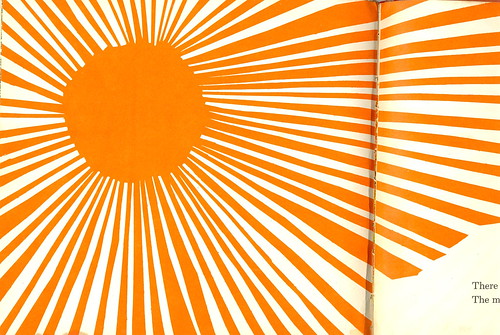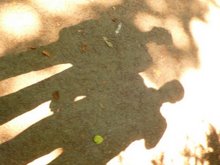
Volcanoes are one of nature's great wonders. For years they can stand dormant, but once active they can erupt in tremendous explosions of power. Some eruptions are so big, they change the earth's climate. Luckily, geologists can now approximate when an eruption will occur. What are the causes of an eruption and what are the warning signs?
Lesson Plan Idea:
VOLCANOES
WEEK 1.
PRE: Exploring the rocks produced by volcanoes.
LAB: Comparing igneous rocks.
POST: Critiquing books on volcanoes for their scientific content.
EARTHQUAKES
WEEK 2.
PRE: Analyzing the types of waves produced by earthquakes.
LAB: Interpreting seismograms with associated damages.
POST: Analyzing earthquakes around the world.
PLATE TECTONICS
WEEK 3.
PRE: Investigating the patterns produced by volcanoes and earthquakes.
LAB Testing models of crustal movement.
POST: Defining plate boundaries.
HAZARDS
WEEK 4.
PRE: Comparing volcanic and earthquake hazards.
LAB: Determining what type of viscous mixtures can cause the most damage.
POST: Exploring earthquakes that are associated with volcanoes.
----------------------------------------------------------------------------
LESSON PLANS AND
ACTIVITIESMath/Science Nucleus © 1990, 2001 2
Math/Science Nucleus © 1990, 2001 3
Klyuchevskoi (Kamchatka, Russia)
OBJECTIVES:
1. Exploring the rocks produced by volcanoes.
2. Describing the parts of a volcano.
VOCABULARY:
andesite
basalt
igneous
obsidian
pumice
ring of fire
scoria
volcanic
MATERIALS:physiographic globe
Internet
BACKGROUND:The study of volcanoes begins the unit on plate tectonics. Plate tectonics is a science that investigates the movement of the Earth's crust. It includes the exterior and interior of the Earth. Both volcanoes and earthquakes provide data for plate tectonics. Magma that feeds volcanoes comes from the upper mantle and lower crust, and not the deep interior of the Earth. Volcanoes were and are important to the development of the Earth. Lava produce the "continents" while the Earth was forming. Volcanoesalso produced the water that we have on this Earth, by chemical ly combining hydrogen and oxygen inside the Earth, to produce steam which was released when the students search the Internet for information on volcanoes.
Math/Science Nucleus © 1990, 2001 4
The interaction of the moving plates at boundaries creates conditions which melt rock. Melted rock is less dense than solid rock, so it will rise and cause an eruption. The model of plate tectonics helps explain why and where we have volcanoes. However, some volcanic action, like the Hawaiian Islands, do not quite fit into the model. Hawaii is in the middle of the Pacific Plate, not at a plate boundary. This and other intraplate volcanoes are probably caused by hotspots, which are magma sources in the Earth’s mantle below the plates. Hotspot magma generation is not fully understood. The restless Earth is not fully understood, so new models on volcanic activity can emerge with new data.
PROCEDURE:
1. Show the students the layers of the Earth using the physiographic globe, or use the presentation below. Point out that the magma that feeds volcanoes comes from the upper mantle and lower crust, and not the deep interior(core) of the Earth. Explain that plate tectonics movements involve the crust and upper mantle, which are collectively called the lithosphere. Students in the fifth grade should have learned about the shapes of volcanoes and their general classification. If they are not familiar with volcanoes review the materials from prior grades.
2. In lab, the students will look at various types of volcanic rocks. Review the vocabulary words with the class, emphasizing that the students will see these rocks in the lab. Remind them that igneous rocks come from volcanoes or from magma that cooled within the outer portion of the Earth. Again, use the physiographic globe to emphasize that magma for volcanoes does not come from the center of the Earth, but only the crust and upper mantle.
3. Review the following diagram and the different types of volcanoes. It is part of the presentation below, or draw it on the board.
1. VENT
2. MAGMA CHAMBER
3. LAVA
4. PUMICE, SCORIA
5. OBSIDIAN (OUTSIDE)
6. BASALT OR ANDESITE (INSIDE THE LAVA FLOW)
4. Instruct the students to conduct a web search on volcanoes to find out more information on their locations; which ones are currently erupting; and how much damage volcanoes do. The web is full of wonderful sites that show the majestic mountains formed by volcanoes.
Below are a few sites that could aid your students, but make sure students perform a search to find their own sites.
www.meto.umd.edu/~jose/VOLCANOES/volcpage.htmlThis site has good pictures, including a simulated 3-D column of ash erupted out
of a volcano.
http://volcano.und.nodak.edu/vwdocs/current_volcs/current.htmlInformation on currently erupting volcanoes around the world, with links to each site.
http://www.geo.mtu.edu/volcanoes/Michigan Technological University - volcano sites from around the world.
http://www.usgs.gov/The US Geological Survey has many links to volcanic activity.
http://www.norvol.hi.is/The volcanoes of Iceland and their eruption histories.
PLATE TECTONIC CYCLE - VOLCANOES
LAB
OBJECTIVES:
1. Comparing igneous rocks.
2. Describing characteristics of igneous rocks.
VOCABULARY:
andesite
basalt
obsidian
pumice
scoria
vesicular
MATERIALS:Plate Tectonic Cycle - Volcanoes relief maps of California
BACKGROUND:
There are many different types of igneous rocks. They all have in common that they were all once melted, and have since cooled down and become solid. Igneous rocks look different because of two factors: they cooled at different rates and the "Mother" Magma (original melted rock) was different. In addition, volcanoes erupt in different ways. Some extrude quiet lava flows, while others explode violently, blowing lava into fragments of pumice or scoria. Geologists use these differences as criteria to name igneous rocks. Rocks that are cooled outside of the volcano are called volcanic rocks, and those that cool inside the lithosphere are called plutonic rocks. Magmas that cool at different rates develop different sized crystals. Quick cooling volcanic rocks such as lava are composed of small crystals. For example, basalt has small crystals that can be seen under a microscope, inferring that basalt cooled quickly. Obsidian is also a volcanic rock, however, this rock cooled so quickly that no crystals had time to form. Slow cooling magma inside the Earth creates plutonic rocks like granite, which is composed of large, visible minerals. Some of the samples in this lab have a “holey” or sponge-like appearance. Geologists call this a vesicular texture and the holes are called vesicles. They form in lava that contains gas. As the pressure on the lava decreases near or on the Earth’s surface, the gas forms bubbles. This is physically similar to the bubbles that happen when a can of soda is opened. In the rock samples the students will see (pumice and scoria) the gas students look at volcanic rocks from California.
PROCEDURE:
1. Ask the students if they think that one volcano can produce different types of rocks. Explain that not all volcanoes are the same. Volcanic rocks differ in composition and eruptive style. Explain the differences in appearance between plutonic and volcanic rocks.
2. Discuss how to describe igneous rocks by offering the students the following words: bumpy, glossy, black, red, greenish, holey, grayish. Review any words that will help them describe the rocks further. Instruct students to find the locations where these rocks were formed by using the map of California to the right. Give them the following information about each location.
Ask them if there are enough data points to conclude if there is a pattern of volcanic rocks in California. The answer is no. You need more data points to make a conclusion.
3. Here is information on each of the rock types:
Gilroy is south of San Jose. The volcanic rock records volcanism that occurred millions of years ago. The volcanoes are now extinct. The type of rock is basalt. Clearlake is north of the San Francisco Bay Region. The vulcanism in Clearlake was more recent that in Gilroy, and were thought to be extinct, but recent studies may list this area as "dormant". The type of rock is obsidian. The Clearlake volcanoes also produced another type of rock called scoria, or a reddish looking rock. Mono Craters which produces the pumice, is presently dormant. However the magma chamber below is still moving upwards and small earthquakes are common in the area. Mt. Lassen is in northern California. The last eruption was in the early 1900's. The volcano is dormant and the type of rock is andesite.
4. The students should conclude that volcanoes produce different types of rocks. The samples that the students have are insufficient to conclude if there are differences between a quiet and violent eruption. However, students may see that some rocks are more "holey" which represents gas being trapped in the rock which is more common in a violent eruption.
PROBLEM: Do rocks produced by volcanoes provide clues about that volcanic eruption?
PREDICTION:__________________________________________________
Look at a map and locate where the rocks came from in California. Describe the rocks in the area provided below. After learning about the type of eruption that caused the volcano, can you interpret if there is a difference in rock type between a violent eruption and a quiet eruption?
1. GILROY, CALIFORNIA - This ancient lava flow erupted with a powerful blast. Lava cascaded down the slopes of the growing volcano.
DESCRIPTION: __________________________________________________
2. CLEARLAKE, CALIFORNIA - The cinders swished from the volcano, causing extensive
deposits, (scoria). Flows of lava cooled quickly to form thick bands of obsidian.
DESCRIPTION: (scoria) _____________________________________________
DESCRIPTION: (obsidian) ___________________________________________
3. BLACK BUTTES, CALIFORNIA - Lava slowly moved from the crater of the volcano.
A thick layer of basalt was deposited.
DESCRIPTION: ___________________________________________________
4. MONO CRATERS, CALIFORNIA - The volcano "coughed" violently, gas trapped in the
molten rock formed pumice.
DESCRIPTION: ___________________________________________________
5. MT. LASSEN, CALIFORNIA - The magma chamber was cooling, but suddenly the
volcano erupted.
DESCRIPTION: ___________________________________________________
CONCLUSION: Are there characteristics of volcanic rocks that indicate what type of
eruption produces them?
_______________________________________________________________
Is there enough data here to really tell? Explain.______________________________
Available in books and the Internet:Volcanoes by Franklyn M. Branley (Harper and Row), and Earthquakes and Volcanoes by Laurence Santrey (Troll)
1. Adults know that some books are written better than others. This however, is not as obvious to children, especially since books are chosen for them. In this exercise we have the students critique two or more books to decide for themselves which is better.
2. Choose two books from the school library that are between a first and third grade reading level. This exercise is designed to
test the students critical reading skills. After they read the books students should decide whether or not they would recommend the book to a young child.
The following two books: Volcanoes by Franklyn M. Branley (Harper and Row) and Earthquakes and Volcanoes by Laurence Santrey (Troll). The reason for these books is because one has a story line (Volcanoes) while the other revolves around facts (Earthquakes and Volcanoes).
3. Explain to students that they should observe if the book is scientifically accurate, easy to read, illustrated, and interesting. Try to recommend an interesting book and one that is "dry."Instruct students to voice their opinions by reading their critiques to the class. See if they have differing opinions. This may be a chance for a debate. If students are unfamiliar with critiques, you may want to guide their comments by having them fill in the graph below.
BOOK 1 BOOK 2
Author, Title
Scientifically correct
Illustrations
Interesting
Content
Other Comments
 Franklyn Mansfield Branley was born in New Rochelle, New York, 5 June 1915, and died of natural causes in Brunswick, Maine, on 5 May 2002, just one month before his 87th birthday. He will be remembered by the hundreds of grateful students he so skillfully introduced to astronomy.
Franklyn Mansfield Branley was born in New Rochelle, New York, 5 June 1915, and died of natural causes in Brunswick, Maine, on 5 May 2002, just one month before his 87th birthday. He will be remembered by the hundreds of grateful students he so skillfully introduced to astronomy.



